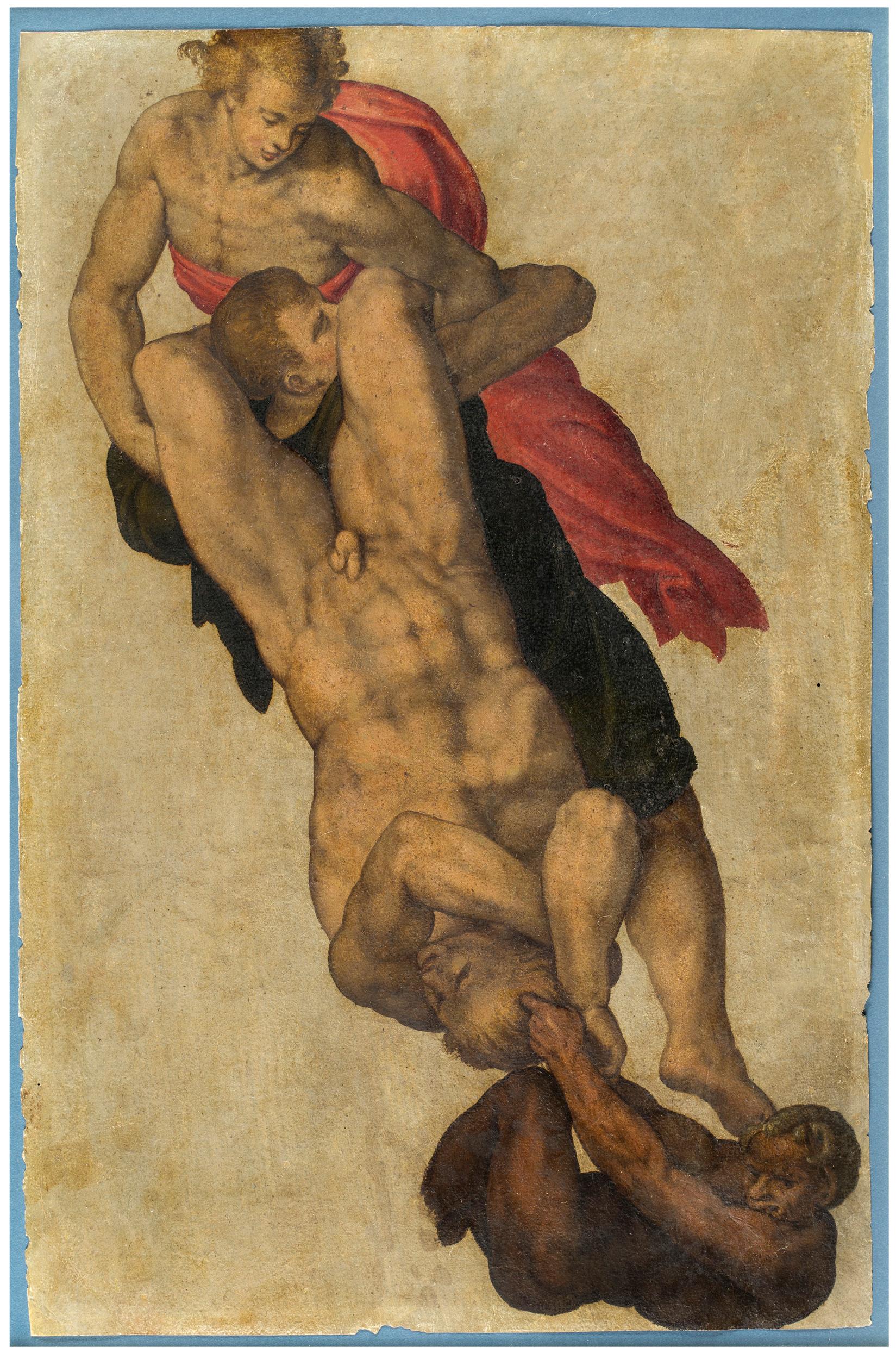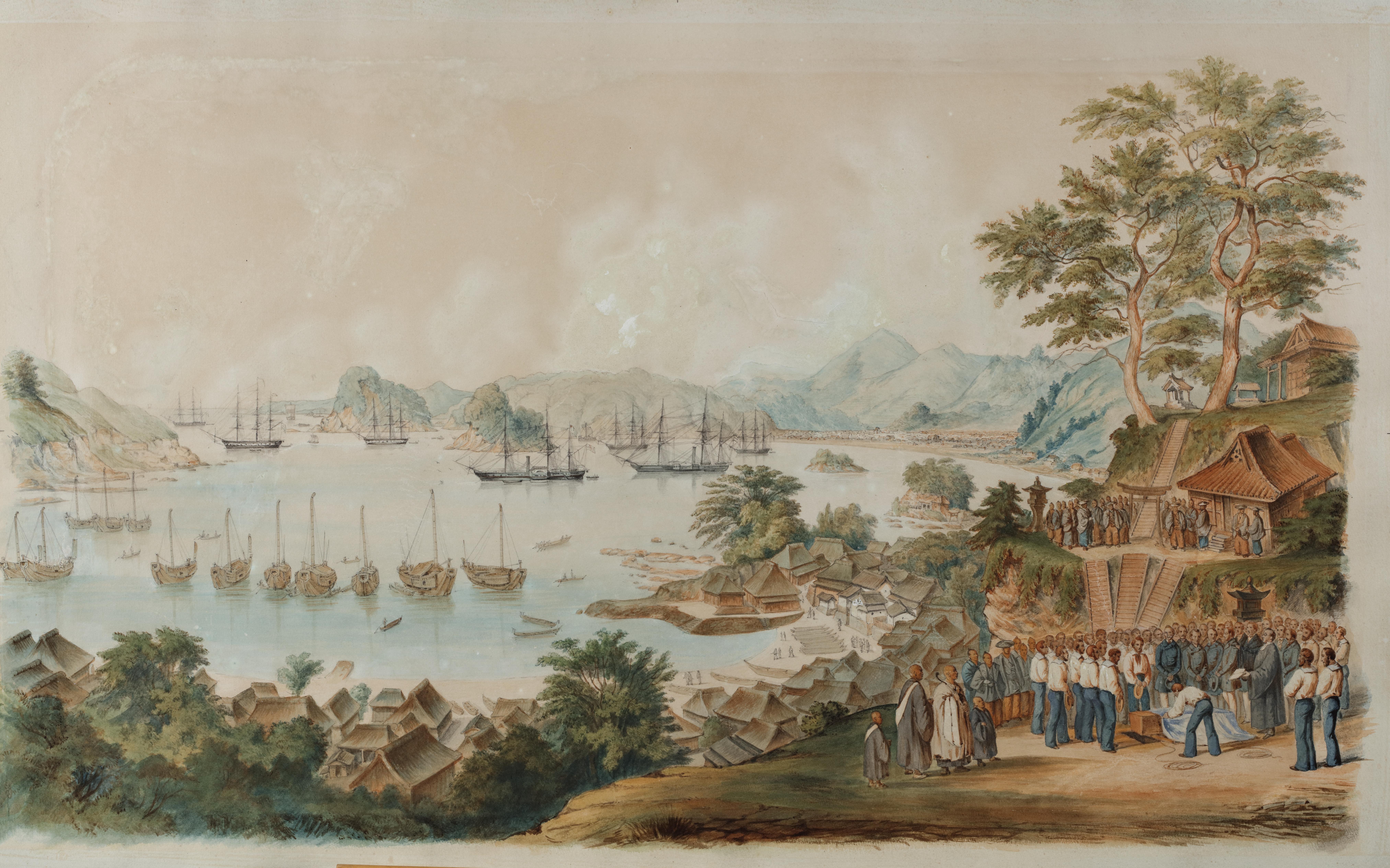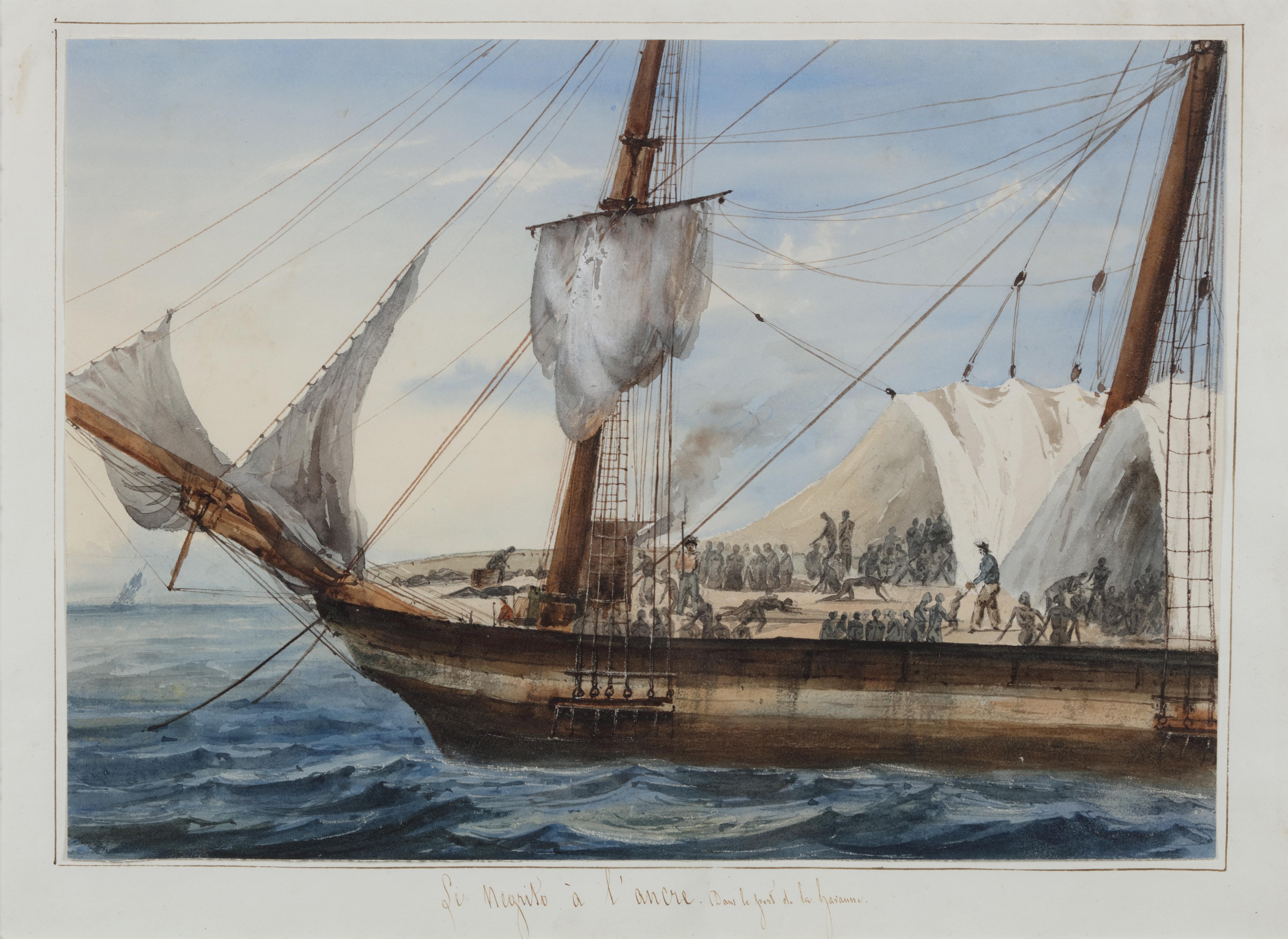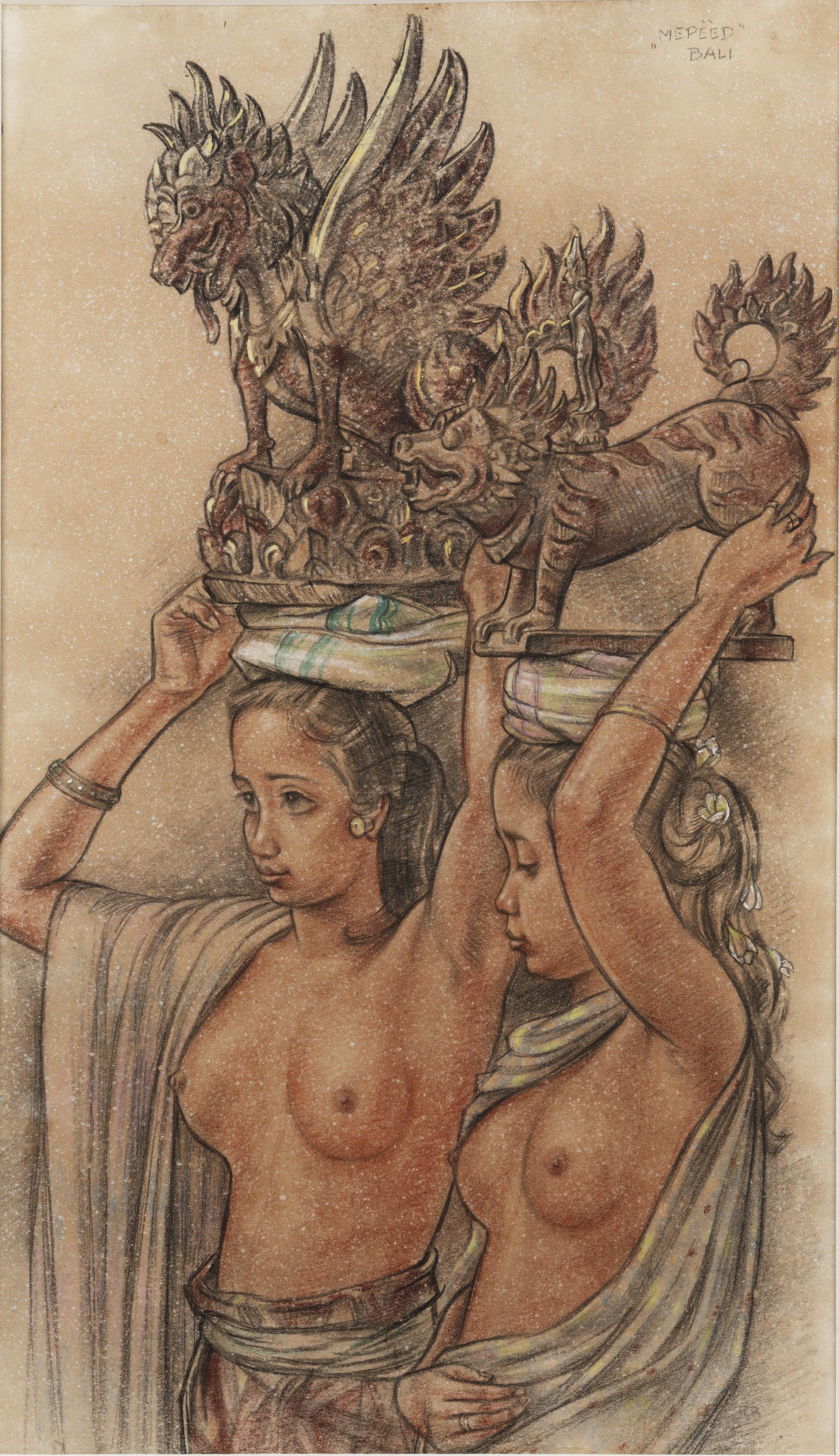Items Similar to H. Wright - Signed & Framed Mid 20th Century Gouache, Coastal Scene
Want more images or videos?
Request additional images or videos from the seller
1 of 8
H. WrightH. Wright - Signed & Framed Mid 20th Century Gouache, Coastal SceneUnknown
Unknown
About the Item
An alluring coastal scene is depicted in this gouache painting.
Signed.
Well presented in a field molded wood frame with a gilded mount.
On wove.
- Creator:H. Wright
- Creation Year:Unknown
- Dimensions:Height: 17.45 in (44.3 cm)Width: 22.25 in (56.5 cm)
- Medium:
- Period:
- Condition:In fine condition.
- Gallery Location:Corsham, GB
- Reference Number:
About the Seller
4.9
Platinum Seller
These expertly vetted sellers are 1stDibs' most experienced sellers and are rated highest by our customers.
Established in 2010
1stDibs seller since 2018
856 sales on 1stDibs
Typical response time: 6 hours
- ShippingRetrieving quote...Ships From: Corsham, United Kingdom
- Return PolicyA return for this item may be initiated within 30 days of delivery.
More From This SellerView All
- William Norman Guant (1918-2001) - Signed Gouache, Donkey Rides at the SeasideLocated in Corsham, GBWilliam Norman Grant (1918-2001) - Signed Original Contemporary Gouache. A fine gouache depicting children riding donkeys on a beach. Signed. On board. In...Category
21st Century and Contemporary Figurative Drawings and Watercolors
MaterialsGouache
- Mid 20th Century Gouache - Continental Harbour SceneLocated in Corsham, GBA fine mid Century scene in gouache with graphic charcoal line work. The scene shows a sunny continental harbour scene in a pretty pastel palette. The artist has signed illegibly (po...Category
20th Century Figurative Drawings and Watercolors
MaterialsGouache
- 20th Century Gouache - A Taylor Tot IILocated in Corsham, GBThree original gouache with watercolour paintings of children's illustrations from the series 'A Taylor Tot'. Well-presented in a double card mount and in a v...Category
21st Century and Contemporary Figurative Drawings and Watercolors
MaterialsGouache
- A.D. Bell (1884-1966) - 1937 Gouache, Clipper under Full SailLocated in Corsham, GBA view of a clipper at sea under full sail. Presented in a pale blue mount and a distressed gilt-effect wooden frame with an ornate outer edge. Signed and dated to the lower-left edg...Category
20th Century Figurative Drawings and Watercolors
MaterialsGouache
- Mid 20th Century Gouache - Beached BoatsLocated in Corsham, GBA coastal scene depicting rows of colourful beached boats with a pier in the distance. Presented in a beige mount and a blue painted wooden frame. On waterc...Category
20th Century Figurative Drawings and Watercolors
MaterialsGouache
- William Carlaw RSW (1847-1889) - Late 19th Century Gouache, FishermenLocated in Corsham, GBA fine gouache and watercolour painting by the artist William Carlaw RSW. The scene depicts a seascape with four fishermen handling a large net. The skilful application of colour and...Category
19th Century Figurative Drawings and Watercolors
MaterialsGouache
You May Also Like
- Italian Mixed Media Gouache Tempera Theatre Set Costume Silhouette PaintingLocated in Firenze, ITThis set of four antique 19th century Italian mixed media painting on paper hand made with gouache, tempera and watercolor, features several characters silhouettes acting in a theater play. These fine artworks are very unusual, they probably were sketches for theatrical costumes and sets. A rare example of Venetian 19th century theatrical figures in the scenery of Italian opera or characters of the Italian Commedia dell'arte. These four paintings featuring costume design figurines, with the characters acting in a theatrical set, are rendered through the decoupage technique mixing watercolor painting or gouache with tempera on paper. Each tiny figurine is made of paper hand-colored in watercolor, then cut and applied to an antique sheet...Category
19th Century Rococo Mixed Media
MaterialsPaper, Tempera, Watercolor, Gouache
- Study after Michelangelo’s “The Last Judgment”By Michelangelo BuonarrotiLocated in New York, NYItalian School, 16th Century Provenance: Private Collection, New York This intriguing drawing is a study by an anonymous 16th-century Italian artist after a vignette in Michelangelo’s fresco of The Last Judgement in the Sistine Chapel. The altar wall of the Sistine Chapel was already richly decorated when Pope Clement VII commissioned Michelangelo to paint his Last Judgment...Category
16th Century Old Masters Figurative Drawings and Watercolors
MaterialsPaper, Gouache
- 1854 Funeral of R. Williams at Gyokusen-ji Temple, Shimoda, with Commodore PerryLocated in Amsterdam, NLWilhelm Heine (Dresden 30 January 1827-Löbnitz 5 October 1885) ‘Funeral of Robert Williams in the cemetery of the Temple Gyokusen-ji at Shimoda in April 1854’ With a sticker on the reverse of the frame by Coupil & Co. 1855 Watercolour on paper, H. 57 x W. 92 cm Depicted is the Bay of Shimoda with seven American ships including the two paddle-wheel warships USS Mississippi and Susquehanna. On the Gyokus- en-ji temple grounds on the right is the coffin in the middle with the remains of US marine Robert Williams, ready to be lowered into the grave. Looking on from the left are the Buddhist monks and Japanese officials who joined the first Christian funeral on Japanese soil. Around the grave are US marines, Commodore Perry...Category
Mid-19th Century Figurative Drawings and Watercolors
MaterialsPaper, Ink, Watercolor, Gouache
- Portrait of a Slave Ship: 'Le Negrito à l’ancre. Dans le port de la havanne'Located in Amsterdam, NLFRANÇOIS MATHURIN ADALBERT, BARON DE COURCY (1805-1839) 'Le Negrito à l’ancre. Dans le port de la havanne' Indistinctly signed lower left Titled on the mount Pencil and watercolour, heightened with white, on paper, 24.8 x 34.6 cm Literature: The present watercolour will be illustrated in: - Prof. Manuel Garcia’s projected book on the disease and the slave trade provisionally titled “Fighting the Yellow Demon of Fever: The Struggle against Disease in the Illegal Slave Trade”. - Prof. Micael Zeuske’s forthcoming Global history of slave trade. Exhibited: Mexico City, 1998, Palacio Virreinal, El Barón de Courcy, illustrationes de un viaje, 1831-1833, no. 108 Note: Baron de Courcy was in the Caribbean in late 1832 and early 1833, following his tour of Mexico in 1832, on the last leg of his “Grand Voyage...Category
Mid-19th Century Old Masters Figurative Drawings and Watercolors
MaterialsGouache, Pencil, Paper, Watercolor
- Two Balinese Beauties (Mapeed), circa 1945By Johan Rudolf BonnetLocated in Amsterdam, NLRudolf Bonnet (1895-1978) 'Mepèèd' (Mapeed) Signed lower right Titled upper right Pastel on gouache pigmented paper, 57 x 34 cm In original carved ebo...Category
1940s Nude Drawings and Watercolors
MaterialsPaper, Crayon, Pastel, Gouache, Pencil
- The Abduction of the Sabine Women , a Renaissance drawing by Biagio PupiniLocated in PARIS, FRThis vigorous drawing has long been attributed to Polidoro da Caravaggio: The Abduction of the Sabine Women is one of the scenes that Polidoro depicted between 1525 and 1527 on the façade of the Milesi Palazzo in Rome. However, the proximity to another drawing inspired by this same façade, kept at the Ecole des Beaux-Arts, and to other drawings inspired by Polidoro kept at the Musée du Louvre, leads us to propose an attribution to Biagio Pupini, a Bolognese artist whose life remains barely known, despite the abundant number of drawings attributed to him. 1. Biagio Pupini, a Bolognese artist in the light of the Roman Renaissance The early life of Biagio Pupini, an important figure of the first half of the Cinquecento in Bologna - Vasari mentions him several times - is still poorly known. Neither his date of birth (probably around 1490-1495) nor his training are known. He is said to have been a pupil of Francesco Francia (1450 - 1517) and his name appears for the first time in 1511 in a contract with the painter Bagnacavallo (c. 1484 - 1542) for the frescoes of a church in Faenza. He then collaborated with Girolamo da Carpi, at San Michele in Bosco and at the villa of Belriguardo. He must have gone to Rome for the first time with Bagnacavallo between 1511 and 1519. There he discovered the art of Raphael, with whom he might have worked, and that of Polidoro da Caravaggio. This first visit, and those that followed, were the occasion for an intense study of ancient and modern art, as illustrated by his abundant graphic production. Polidoro da Caravaggio had a particular influence on the technique adopted by Pupini. Executed on coloured paper, his drawings generally combine pen, brown ink and wash with abundant highlights of white gouache, as in the drawing presented here. 2. The Abduction of the Sabine Women Our drawing is an adaptation of a fresco painted between 1525 and 1527 by Polidoro da Caravaggio on the façade of the Milesi Palace in Rome. These painted façades were very famous from the moment they were painted and inspired many artists during their stay in Rome. These frescoes are now very deteriorated and difficult to see, as the palace is in a rather narrow street. The episode of the abduction of the Sabine women (which appears in the centre of the photo above) is a historical theme that goes back to the origins of Rome and is recounted both by Titus Livius (Ab Urbe condita I,13), by Ovid (Fasti III, 199-228) and by Plutarch (II, Romulus 14-19). After killing his twin brother Romus, Romulus populates the city of Rome by opening it up to refugees and brigands and finds himself with an excess of men. Because of their reputation, none of the inhabitants of the neighbouring cities want to give them their daughters in marriage. The Romans then decide to invite their Sabine neighbours to a great feast during which they slaughter the Sabines and kidnap their daughters. The engraving made by Giovanni Battista Gallestruzzi (1618 - 1677) around 1656-1658 gives us a good understanding of the Polidoro fresco, allowing us to see how Biagio Pupini reworked the scene to extract this dynamic group. With a remarkable economy of means, Biagio Pupini takes over the left-hand side of the fresco and depicts in a very dense space two main groups, each consisting of a Roman and a Sabine, completed by a group of three soldiers in the background (which seems to differ quite significantly from Polidoro's composition). The balance of the drawing is based on a very strongly structured composition. The drawing is organised around a median vertical axis, which runs along both the elbow of the kidnapped Sabine on the left and the foot of her captor, and the two main diagonals, reinforced by four secondary diagonals. This diamond-shaped structure creates an extremely dynamic space, in which centripetal movements (the legs of the Sabine on the right, the arm of the soldier on the back at the top right) and centrifugal movements (the arm of the kidnapper on the left and the legs of the Sabine he is carrying away, the arm of the Sabine on the right) oppose each other, giving the drawing the appearance of a whirlpool around a central point of support situated slightly to the left of the navel of the kidnapper on the right. 3. Polidoro da Caravaggio, and the decorations of Roman palaces Polidoro da Caravaggio was a paradoxical artist who entered Raphael's (1483 - 1520) workshop at a very young age, when he oversaw the Lodges in the Vatican. Most of his Roman work, which was the peak of his career, has disappeared, as he specialised in facade painting, and yet these paintings, which are eminently visible in urban spaces, have influenced generations of artists who copied them abundantly during their visits to Rome. Polidoro Caldara was born in Caravaggio around 1495-1500 (the birthplace of Michelangelo Merisi, known as Caravaggio, who was born there in 1571), some forty kilometres east of Milan. According to Vasari, he arrived as a mason on the Vatican's construction site and joined Raphael's workshop around 1517 (at the age of eighteen according to Vasari). This integration would have allowed Polidoro to work not only on the frescoes of the Lodges, but also on some of the frescoes of the Chambers, as well as on the flat of Cardinal Bibiena in the Vatican. After Raphael's death in 1520, Polidoro worked first with Perin del Vaga before joining forces with Maturino of Florence (1490 - 1528), whom he had also known in Raphael's workshop. Together they specialised in the painting of palace façades. They were to produce some forty façades decorated with grisaille paintings imitating antique bas-reliefs. The Sack of Rome in 1527, during which his friend Maturino was killed, led Polidoro to flee first to Naples (where he had already stayed in 1523), then to Messina. It was while he was preparing his return to the peninsula that he was murdered by one of his assistants, Tonno Calabrese, in 1543. In his Vite, Vasari celebrated Polidoro as the greatest façade decorator of his time, noting that "there is no flat, palace, garden or villa in Rome that does not contain a work by Polidoro". Polidoro's facade decorations, most of which have disappeared as they were displayed in the open air, constitute the most important lost chapter of Roman art of the Cinquecento. The few surviving drawings of the painter can, however, give an idea of the original appearance of his murals and show that he was an artist of remarkable and highly original genius. 4. The façade of the Milesi Palace Giovanni Antonio Milesi, who commissioned this palace, located not far from the Tiber, north of Piazza Navona, was a native of the Bergamo area, like Polidoro, with whom he maintained close friendly ties. Executed in the last years before the Sack of Rome, around 1526-1527, the decoration of Palazzo Milesi is considered Polidoro's greatest decorative success. An engraving by Ernesto Maccari made at the end of the nineteenth century allows us to understand the general balance of this façade, which was still well preserved at the time. The frescoes were not entirely monochrome, but alternated elements in chiaroscuro simulating marble bas-reliefs and those in ochre simulating bronze and gold vases...Category
16th Century Old Masters Figurative Drawings and Watercolors
MaterialsInk, Gouache, Pen
Recently Viewed
View AllMore Ways To Browse
H And H
Signed Framed
H Sign
Framed Gouache
Molded Wood
20th Century Gouache
Coastal Scenes
Midcentury Gouache Painting
Gouache Mid Century
Wood Coastal
Mid 20th Century Gouache Painting
Coastal Figurative Paintings
Framed Coastal Watercolor
Drawing Of Paris
Vintage Watercolor Paper
Framed And Signed Watercolors
Watercolor Painter
Art Brown Drawings




